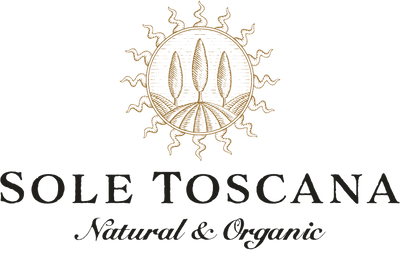You probably know that Vitamin C is good for you—but do you fully understand why this is so?
To benefit from the topical and internal use of Vitamin C, it's crucial to know more about it. Let's learn about the different forms, benefits, application process, and how to choose the best quality products incorporating this ingredient.
Topical vitamin C for skin
Vitamin C is a powerful, naturally occurring antioxidant. It's used topically to alleviate a variety of skin conditions such as:
- Creating the appearance of a brighter, even complexion
- Lessening the appearance of temporary redness
- Reducing the appearance of aging
- Minimizing the appearance of wrinkles
- Promoting an even skin tone
- Brightening your look
- Protecting skin from environmental stressors
- Reducing the appearance of dullness
Types of topical vitamin C
Different brands use various forms of topical vitamin C. The main differences occur in the stability. Research suggests that some C derivatives may not penetrate the skin, while some products have them in negligible amounts. Here are some of the main types.
L-ASCORBIC ACID
This form is the most potent and pure because it's the only form that is absorbed entirely. It will linger in the skin for up to 72 hours, even after a shower.

Unfortunately, it's the least stable form of vitamin C because it oxidizes quickly. Also, it causes the most skin irritation and can leave a temporary yellow tinge.
MAGNESIUM ASCORBYL PHOSPHATE
This form of C is more stable than L-ascorbic acid and has excellent penetration quality due to its basic pH of 7.
It has a hydrating, emollient effect on the skin.
SODIUM ASCORBYL PALMITATE (SAP)
Research shows that SAP is more stable than other forms of C. The skin converts it into ascorbic acid, which protects against environmental stressors. The acid also protects us against Propionibacterium, an acne-causing bacteria.
ASCORBIC ACID POLYPEPTIDE
This form is exceptionally stable and converts into vitamin C when applied. It causes minimal irritation.
ASCORBYL GLUCOSAMINE
This is a mixture of an amino sugar known as glucosamine and vitamin C. It protects against environmental stressors, clarifies, and balances the skin. However, there isn't enough research to back up these claims.
ASCORBYL GLUCOSIDE
This vitamin C carries the same properties as ascorbyl glucosamine. The difference is that it's mixed with glucose.
SODIUM ASCORBYL PALMITATE
This is a hybrid of palmitic acid and L-ascorbic acid. However, it's non-acidic. It revitalizes the appearance of mature skin and protects against environmental stressors, but only at high concentrations. Many skincare products have low levels.
Synthetic versus natural
Natural forms of this vitamin come from fruits, plants, and other natural materials. Synthetic C is lab-produced, lacks phytonutrients and flavonoids, and contains synthetic fillers to aid in absorption.
We pride ourselves on using all-natural forms of C, such as rosehip seed oil and sea buckthorn berries.
WHICH C TO CHOOSE
Synthetic C is more stable than the natural form, but it's not necessarily the best. Scientists differ on whether or not synthetic topical vitamin C can effectively penetrate the skin or remain stable long enough to be effective.
Natural C is less complicated yet useful because it contains enzymes, bioflavonoids, and ascorbic acid. These natural compounds provide a healthy complexion. As with any natural ingredient, you need patience to see results.
Applying topical vitamin C
When applying topical vitamin C, make sure your skin is clean.
Always pat serums into your face (don't rub), you don't break down the ingredients. You'll find natural C in products such as our serum.
Benefits of internal vitamin C
Dr. Albert Szent-Györgyi discovered the internal use of vitamin C as a cure for scurvy in the 1930s. This disease occurs due to malnutrition. When you consume vitamin C, it aids the body in effectively using carbohydrates, protein, and fat.
Vitamin C also reduces cortisol, a hormone released during stress.
Cortisol spikes can cause a decrease in muscle tissue, and an increase in fat around the midsection.
TAKING INTERNAL VITAMIN C
Apart from using supplements, there are various natural sources of vitamin C. These include oranges, cantaloupe, spinach, papaya, strawberries, bell peppers, green peas, cabbage, tomatoes, and pineapple.
STAY INFORMED
While Sole Toscana vouches for the efficiency of natural vitamin C, it's okay to try out a synthetic form. However, do your research first by reading reviews and asking salespeople specific questions on stability and added ingredients.
With love,
The Sole Toscana Beauty Team


